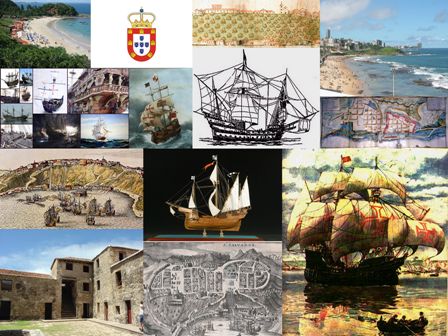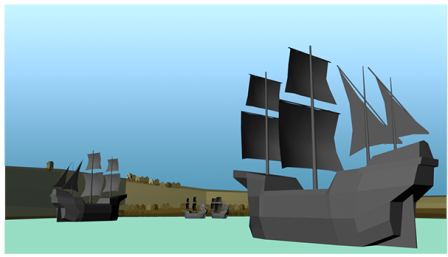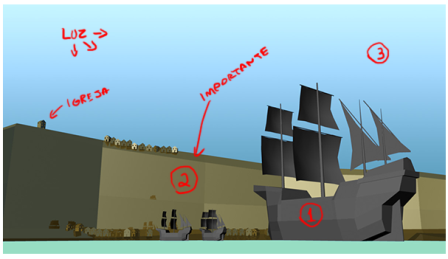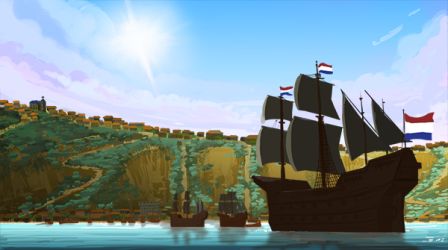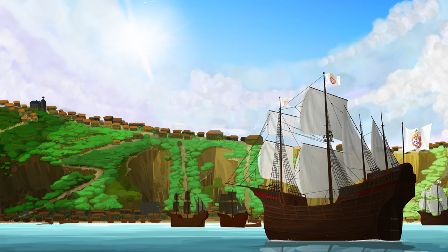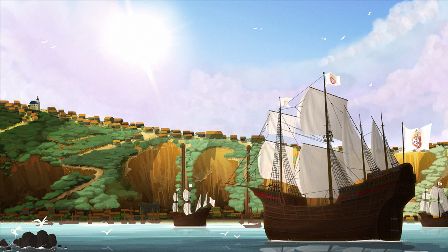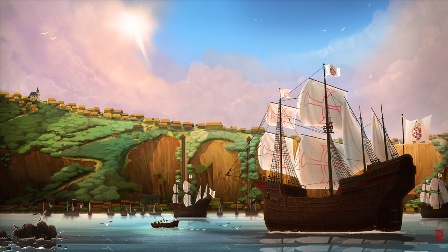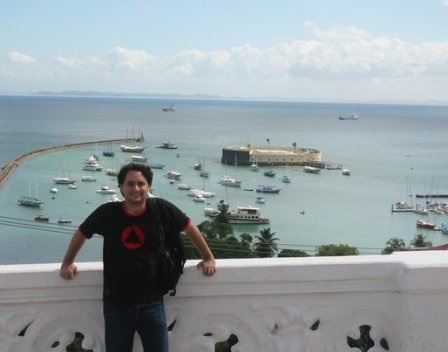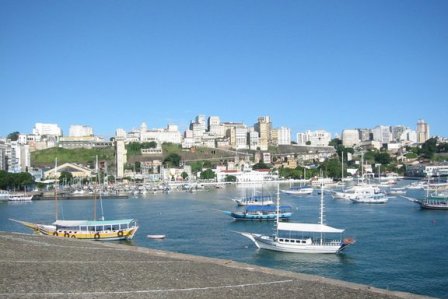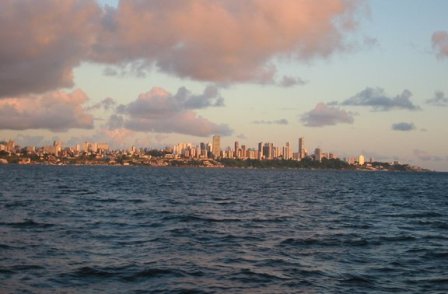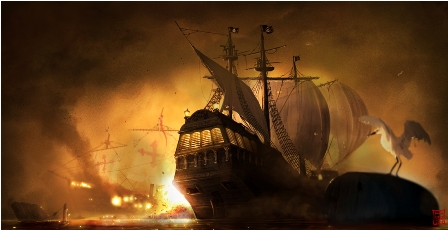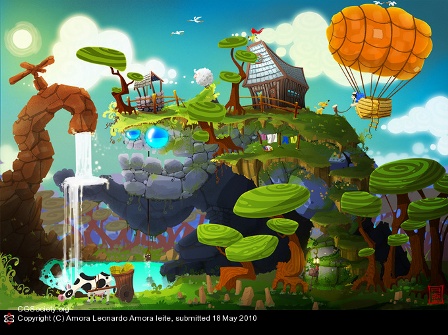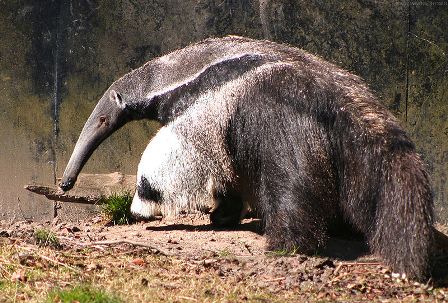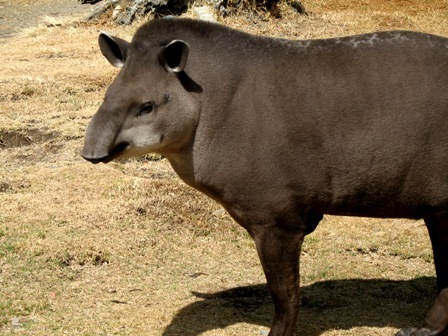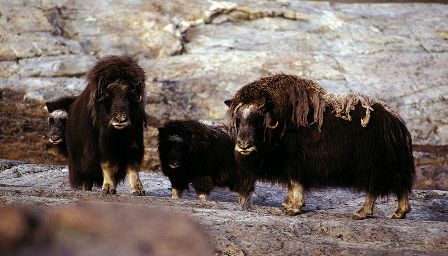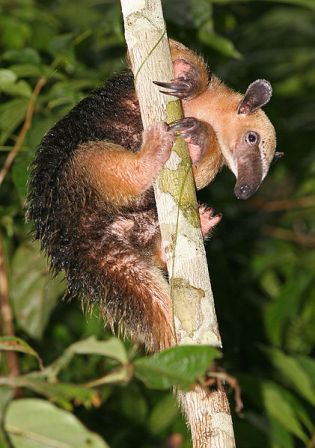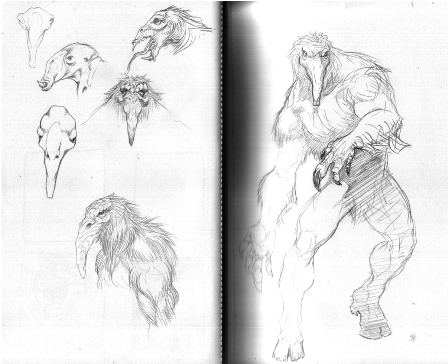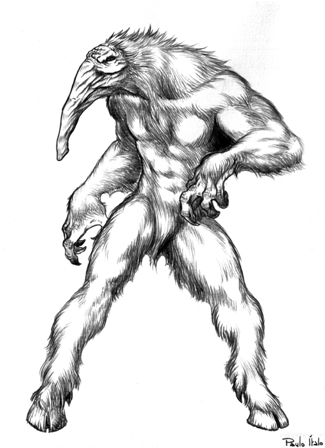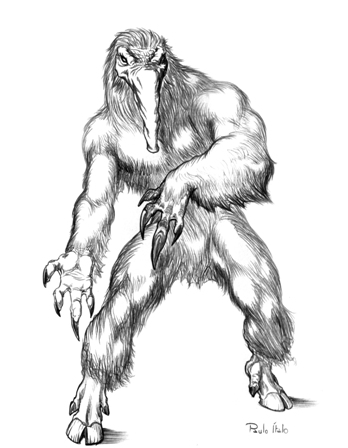Making of – Arrival in Salvador Painting – Part 2
This post continues Making of – Arrival in Salvador Painting – Part 1.
Once we’d agreed on the rough details of the composition, Leonardo began by collecting some references and creating a mood board:
Leonardo then modeled the scene in 3D. This allowed him to get a good feel for both lighting and perspective of the scene and provide a vehicle to discuss them with me.
3D Perspective Tests
Amora offered some different options of perspective, but from the start I wanted Salvador to be tall and dominant in the background.
You can see that even in these early tests, the church appears as an important element. This was also one of my requests. The ship and the church, two important symbolic elements of Gerard’s arrival in Brazil, would each dominate one end of the painting. The church, in fact, is intended to be the church mentioned in the first line of “The Fortuitous Meeting”.
(Side note: I even considered placing a small splotch of red over the cross (those who have read the story will understand the reference), but in the end I thought it would have just been lost. For a high-res version, perhaps it might be worth it going back and adding that in.)
The next steps went quickly. Amora began with a speed painting to get all the elements and basic colors in the right places.
Speed Painting
A second and third pass added in more color and lighting detail:
Then he performed extensive detail work to arrive at the final result:
Arrival in Salvador – Final Image
But Amora didn’t stop there. He went on to create several variations of the painting, some of which appear in the artwork section of this site.
I hope you enjoyed this making of as much as I did writing it. More on the world of The Elephant and Macaw Banner coming soon!




